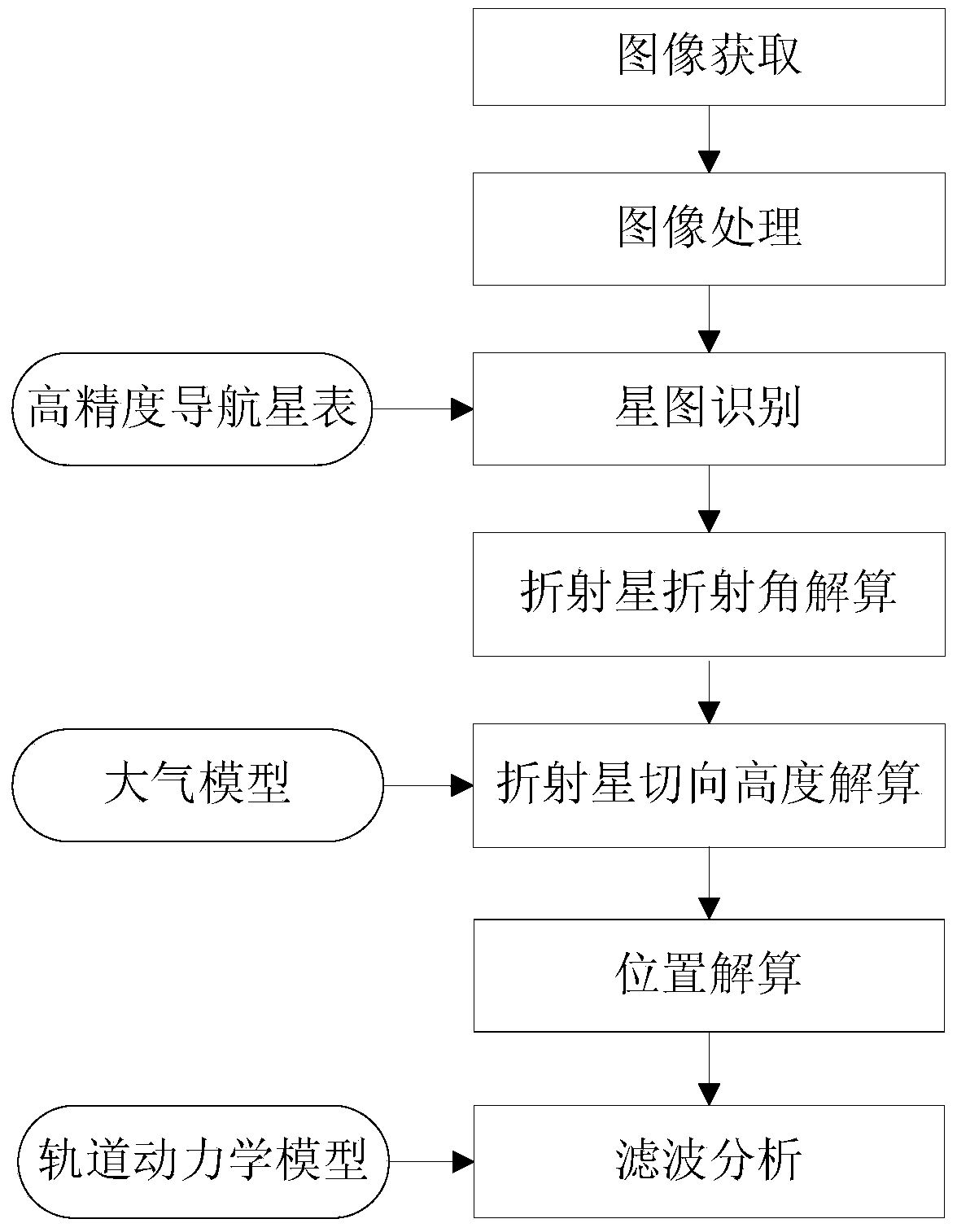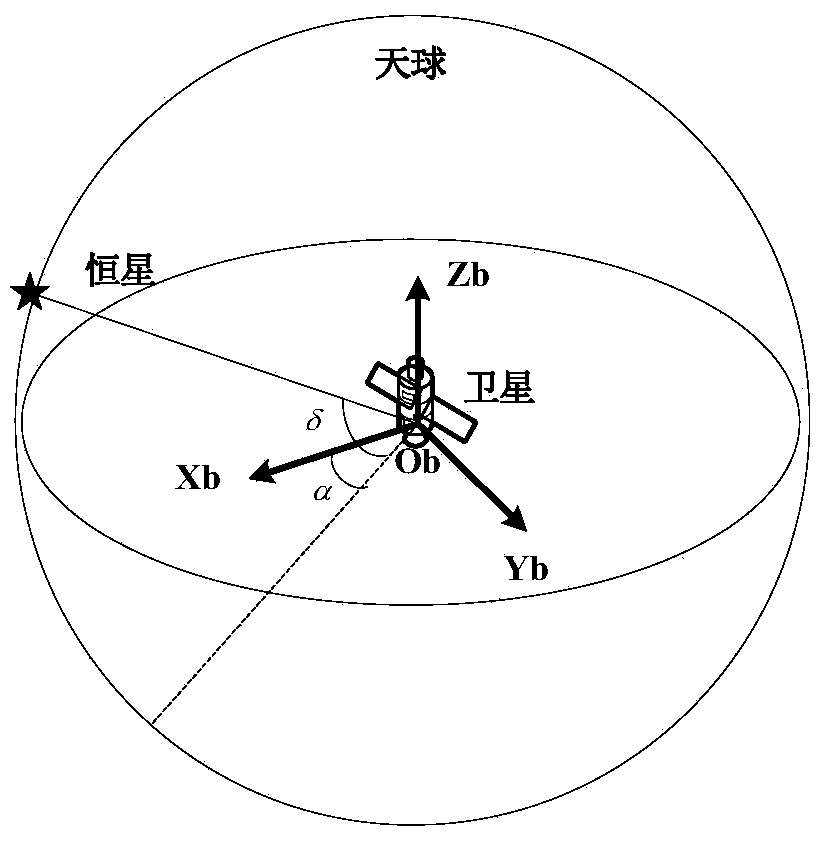Autonomous all-weather stellar refraction satellite location method
A starlight refraction and autonomous positioning technology, applied in the field of astronomical navigation, can solve the problems of high technical difficulty, low precision, and many instruments and equipment, and achieve the effect of improving navigation accuracy and high data update rate
- Summary
- Abstract
- Description
- Claims
- Application Information
AI Technical Summary
Problems solved by technology
Method used
Image
Examples
Embodiment 1
[0095] The present invention is based on the image processing technology for star extraction under the strong background introduced above, and verifies the feasibility of star extraction under the strong background of the earth through ground-based observation of the moon and its surrounding stars. Exposure, 12th magnitude stars are identifiable near the edge of the moon. According to the differences and similarities between space-based observations and ground-based observations, and for different observation background brightness and observation equipment, based on the following detection system signal-to-noise ratio formula, it can be deduced that the starlight refraction sensor can achieve 7.5 Detection of stellar magnitudes.
[0096] s / N = ψ s ( Aq s 2 t ) ...
Embodiment 2
[0099] The satellite starlight refraction navigation simulation system is under the condition that the star measurement accuracy is 3" (3σ) and the atmospheric model error is 1%, by simulating the starlight refraction navigation function in the process of satellite GTO (20000km ~ 36000km), the starlight refraction navigation system is obtained The positioning accuracy is better than 1.2km.
PUM
 Login to View More
Login to View More Abstract
Description
Claims
Application Information
 Login to View More
Login to View More - R&D
- Intellectual Property
- Life Sciences
- Materials
- Tech Scout
- Unparalleled Data Quality
- Higher Quality Content
- 60% Fewer Hallucinations
Browse by: Latest US Patents, China's latest patents, Technical Efficacy Thesaurus, Application Domain, Technology Topic, Popular Technical Reports.
© 2025 PatSnap. All rights reserved.Legal|Privacy policy|Modern Slavery Act Transparency Statement|Sitemap|About US| Contact US: help@patsnap.com



